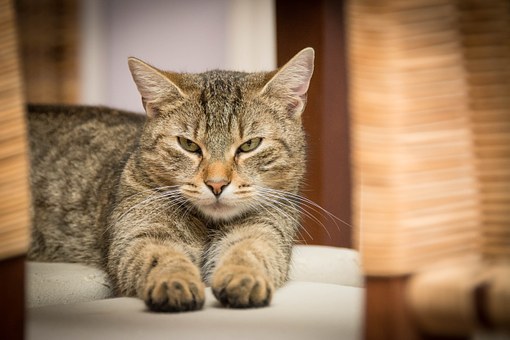Related Post
If you own a cat, you can enjoy some benefits from investing in the best cat litter mat. Cats can mess the house if they are not taken care of. Almost all cats like to cover their poops, and therefore you need to provide kitty litter mat. After they are done with their business, their paws are usually messy and can easily litter the house. So, they need a mat to clean the paws.
Benefits of kitty litter mat
Cleans the cat’s paws
It is important to know your cat will feel uncomfortable when its paws become dirty. For this reason, in the absence of a kitty litter mat, your cat will use any material or object available to clean its paws. To help keep your carpets, expensive sofas, as well as rugs clean, it is important to buy a kitty litter mat for your cat.
Help keep your home clean
The kitty litter mat is supposed to be placed under your cat’s litter box. Once the cat leaves its litter box, its paws will always collect some dirt as well as several pieces of tiny litter. When returning to the litter box, the dirt and litter that it has picked on its paws will be wiped off by the litter mat. Also, every time the cat is leaving the litter box, the kitty litter mat will help wipe off any litter and dirt that it may have picked inside the litter box.
It is easier to clean your cat’s litter box
Cleaning a kitty litter mat is very easy; just shake the dirt off and then machine wash it. You can also use other methods of cleaning; including using a vacuum cleaner or a wet sponge. Cleaning the litter mat regularly helps keep it clean and hygienic.
Help prevent diseases from spreading
Allowing your cat’s dirty litter and feces to spread all over the house can expose your loved ones as well as your cat to disease. This is because cat feces contain certain bacteria, including E. coli, which can cause illnesses to the members of your family, especially to young children who are aged 5 and below. Using a litter mat will certainly help reduce the spread of cat litter and feces, thus lowering the risk of diseases.

Conclusion
Kitty litter mats are readily available in many stores and come in a variety of styles and sizes. It is advisable to buy one for your cat. You just need to ensure that you choose the best one for your cat in terms of style and size.
Pursuing legal means to seek compensation after being involved in an accident the best option. You should do this when you are involved in an accident that is as a result of another driver’s negligence. There are so many careless drivers on our roads who subject the lives of other road users to risk. This may leave your car damaged, and you will also experience physical harm.
Getting compensation from such can help you fix the damages and settle your medical bills. An accident attorney can help ensure that you have a successful hearing. They will argue your case in the best way possible and explain to the court the settlement you deserve for the harm caused to you. These attorneys can also ensure you enjoy other benefits in several areas due to your condition.
This is meant for those who have contributed enough to the Canada Pension Plan (CPP) and are disabled. The car accident attorney you choose should be experienced if you want to win your case and get compensated fast. Get to know the period one has been in service and the number of successful cases they have handled. There are several things you should know before filing a car accident suit. They include:
those who have contributed enough to the Canada Pension Plan (CPP) and are disabled. The car accident attorney you choose should be experienced if you want to win your case and get compensated fast. Get to know the period one has been in service and the number of successful cases they have handled. There are several things you should know before filing a car accident suit. They include:
Evidence Presentation
Most cases are argued and settled based on the evidence presented before the court. You need to show something that will convince the jury. It should also be admissible. Some of the evidence you can submit through your attorney include medical records, accident reports, witness interviews and expert interviews. All evidence should be gathered before the beginning of your hearing since most juries don’t accept fresh evidence.
Settlement Period
You should understand that your claim can be settled after a long period. Some judges or juries can take months to come up with the final verdict for your hearing. This depends on the nature of your case. You should be prepared for such if you are more patience to get justice.
Costs
There are different costs you will incur when filing such a case. They include court costs, investigation costs, expert witness fees and administrative expenses. You should be ready for all these if you are going to file such a suit. You will also be required to pay your attorney for legal representation. Be prepared for all these before filing this suit.
Every business is a gamble for most entrepreneurs. You can make a lot of money or lose it with minimal effort. However, that doesn’t mean vending machines are out of reach for entrepreneurs. With these six tips, you can dramatically increase your vending machine revenue.
Perhaps you are unhappy with your current income or want to make more money. If this is the case, you might consider starting a vending machine business.
Decide What You Want to Sell
 There are many ways potential entrepreneurs can sell vending machines. Most people associate vending machines with the candy and drink machines found outside supermarkets. However, vending machines can also be used to sell candy, gum, and stickers.
There are many ways potential entrepreneurs can sell vending machines. Most people associate vending machines with the candy and drink machines found outside supermarkets. However, vending machines can also be used to sell candy, gum, and stickers.
Refrigerated vending machines can be used for snacks and lunch. You can rent or buy toiletries from vending machines and purchase personal items from vending machines. At airports, there are electronic vending machines that sell chargers and wireless headphones. Think about the products you want to sell and then consider the costs of setting up your business.
Choose the Right Location for Your Product
 As with any retail business, location is crucial to the success of a vending machine. The best locations are those that offer the most opportunities. Locations should match the products you sell. Good locations should not have vending machines. However, you are likely to find that the best locations in your area are already occupied. The choice of products should be suitable for your chosen location and traffic. Even the most popular products may not sell in a busy area if the target market is incorrect.
As with any retail business, location is crucial to the success of a vending machine. The best locations are those that offer the most opportunities. Locations should match the products you sell. Good locations should not have vending machines. However, you are likely to find that the best locations in your area are already occupied. The choice of products should be suitable for your chosen location and traffic. Even the most popular products may not sell in a busy area if the target market is incorrect.
Determine Your Target Market
 Market research is an essential part of any business plan. This is true in this industry as well. Pretty sure that you have seen vending machines offering snacks or drinks when you’re out and about. People may need something to eat between meals in churches, schools, entertainment centers, and other busy activities. A vending machine is convenient for those who need a quick snack or drink at these locations. You may not have realized how well-maintained vending machines are. Even small and medium-sized businesses can serve their communities in this way.
Market research is an essential part of any business plan. This is true in this industry as well. Pretty sure that you have seen vending machines offering snacks or drinks when you’re out and about. People may need something to eat between meals in churches, schools, entertainment centers, and other busy activities. A vending machine is convenient for those who need a quick snack or drink at these locations. You may not have realized how well-maintained vending machines are. Even small and medium-sized businesses can serve their communities in this way.
Summary
If you have vending and business experience, it may make sense to start your own vending company. You will need to find reputable vending machine companies, receive training, and identify the best locations for your vending business. If you have never worked in vending before, this can take much longer. This means that starting a vending machine business can be difficult and time-consuming for a newcomer. Starting your own vending machine business is best for those who can confidently negotiate the best positions and devote a lot of time to starting the business.




